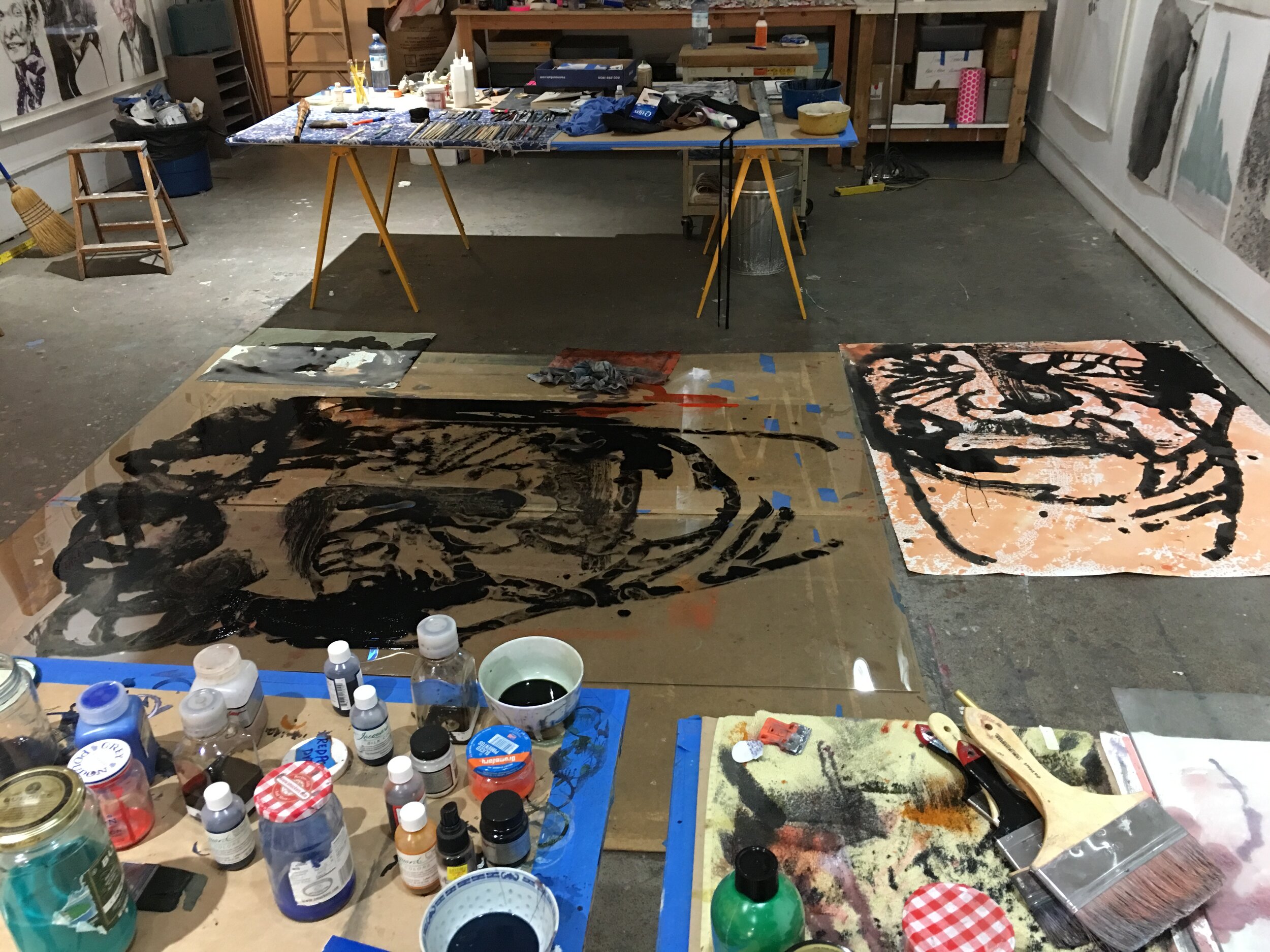Storm Tharp: Cadre in process
Storm Tharp investigates the relationships between form and identity. He is perhaps best known for his figurative drawings and paintings, which combine hyperrealistic details and expressive splashes of color and other breaks in the picture plane. Using a mix of ink, pencil, and paint, Tharp creates portraits—sometimes literal, as with the face of a celebrity, an unknown sitter, or himself. and at other times abstract—in an expressive wash of color that evokes emotional and interior states.
The connection between these approaches is made clear in Cadre, a collection of thirty-six works on paper arranged in a grid, of which eighteen are on view here. This work intermixes legible, bustlike portraits and splashes of pink, blue, purple, and ochre. The individual pieces are an unlikely mix of art-historical references that move between abstraction and representation, the logic of the grid, and the energy of gesture. Even when Tharp’s subjects are clearly human, he applies drips and smudges of color and combines multiple perspectives to present impressions of their moods and anxieties; overall, the work suggests a sense of pathos and sentiment. The seriality of this piece yields both juxtaposition and cohesion. While a breadth of gestures is contained in this suite of works on paper, together they form an expressive, almost linguistic set of images that holds contradiction and grace side-by-side.



















It didn’t initially occur to me to me to combine the abstract panels with the figurative. I saw them as two separate collections of work.
-Storm Tharp
Glass paintings and the contact print results
Cadre panel 1 Left: glass painting Right: contact print
Cadre panel 2 Left: first pull, contact print Right: remaining ghost image, same glass, final contact print select
Cadre panel 3 Left: glass drawing Middle: final contact print Right: alternative glass drawing
Cadre panel 4 Left: glass drawing Right: final contact print.
Two contact prints from the same glass drawing.
The one on the right eventually was added to a different piece, titled: Burn Yr’self A Bridge.













